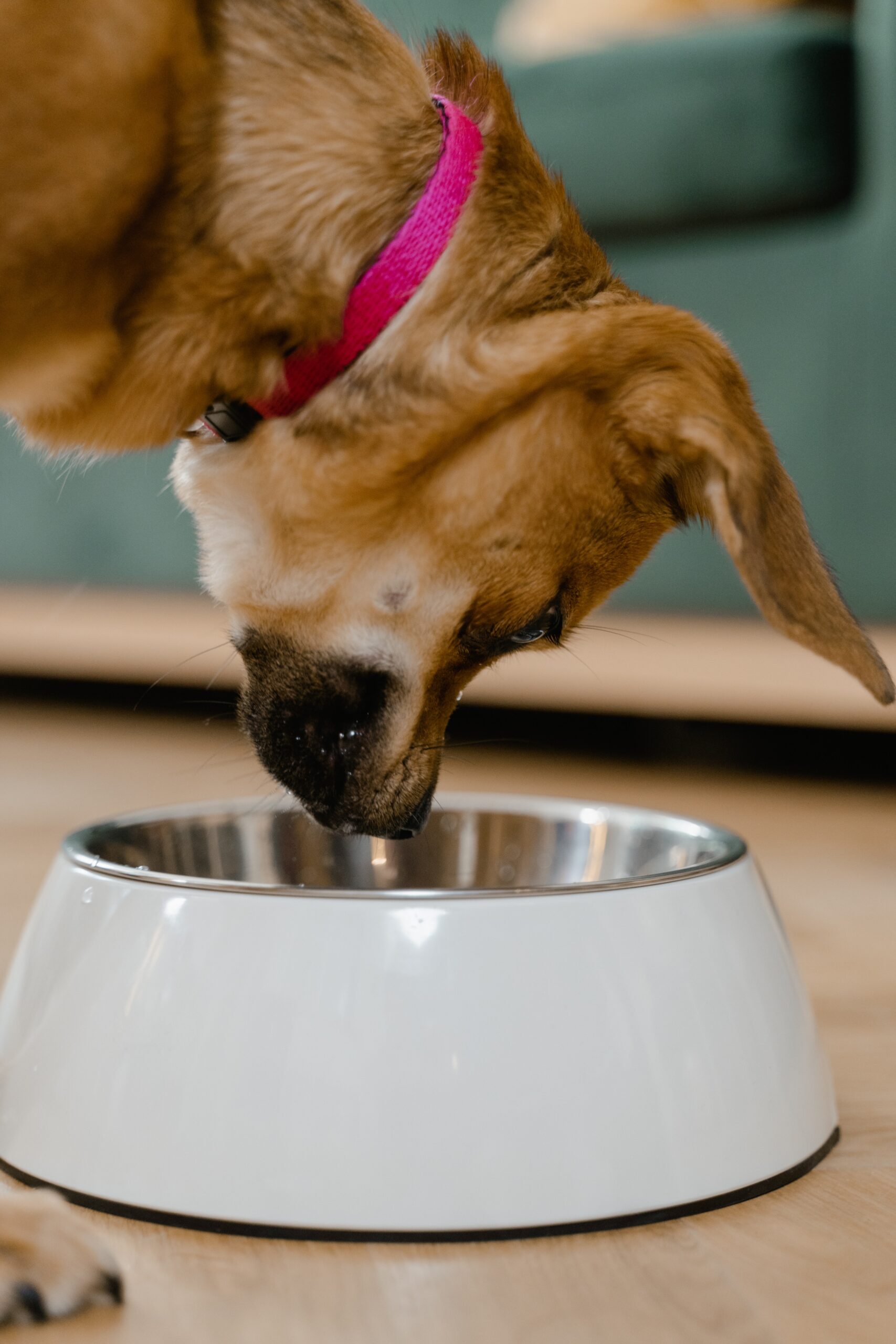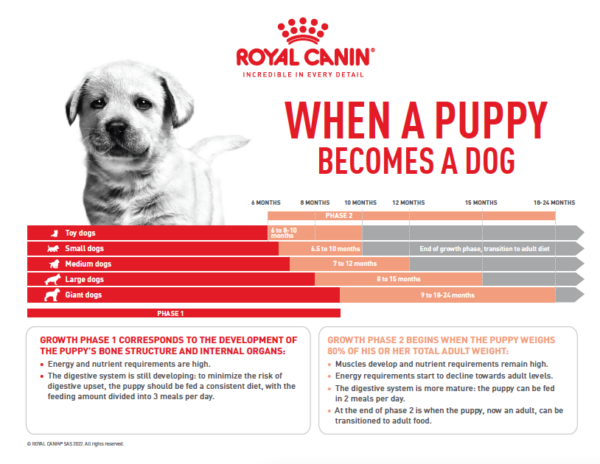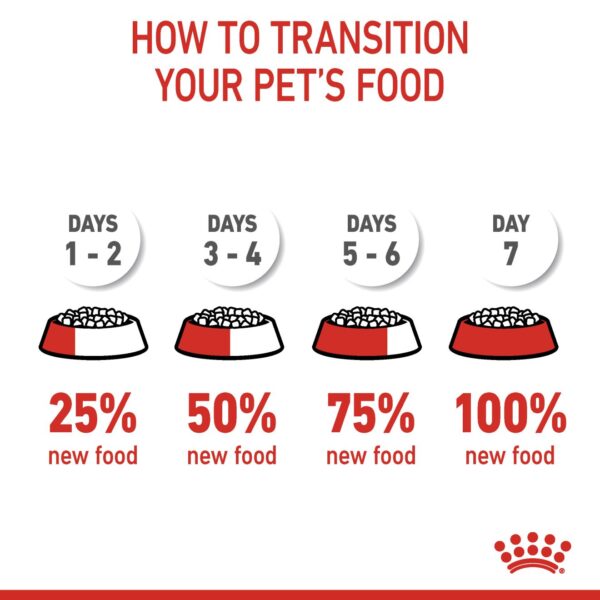From tiny paws to big leaps: Navigating growth and nutrition with love
by Ontario SPCA and Humane Society | General Pet Care | June 9, 2023

Guest blog by Dr Emmanuel Fontaine, Scientific Communications Veterinarian at Royal Canin North America
John was a first-time pet parent, determined to do everything right. His Labrador Retriever puppy, Charlie, was the light of his life. He would never forget the first time he brought this adorable, wiggly ball of fur home. Charlie’s cute little face, playful antics, and boundless energy were simply irresistible. But time flies, and before John knew it, that tiny pup had grown into an adult dog – a bittersweet moment for every pet parent. In this journey of growth, the transition from puppy food to adult dog food plays a pivotal role in maintaining their health and well-being. Perhaps, like John, you are going through this moment and, like him, you have tons of questions. When should you do this? How? Is there anything that can impact this timing? Are there any tools you should be aware of here? In this blog, we’ll uncover the answers to common questions and concerns pet owners have regarding this matter. And in doing so, we’ll not only help strengthen the bond you share with your dogs, but also provide them with the healthiest and happiest life possible.
When should one switch a puppy to adult dog food?
Navigating the world of puppy growth is like embarking on an adventure filled with twists and turns. Puppies experience two distinct phases of growth: the first focuses on the development of their bone structure and internal organs, while the second sees the growth of muscles and a decline in energy requirements.
The moment to switch from puppy to adult food depends on the size of your furry companion. Small dogs reach their adult size at around ten months, while giant breeds may take up to 18 to 24 months. As you can see on the picture below, the journey for each dog is unique, much like the pages of an unfolding story.
Seeking guidance from a trusted veterinarian can offer invaluable insights and ease the uncertainty surrounding the transition – especially in the case of mixed-breed dogs. Today, the availability of genetic tests helps estimate a dog’s adult size, providing a clearer picture of your puppy’s growth trajectory.
By understanding your puppy’s unique development, you can make an informed decision and ensure a smooth transition to adult dog food, ultimately nurturing their health and well-being for years to come.

| Toy Dogs | Small Dogs | Medium Dogs | Large Dogs | Giant Dogs | |
| Average Adult weight | <4kg | <10kg | 10-25kg | 25-45kg | >45kg |
| Growth Duration | 8-10 months | 8-10 months | 12 months | 15 months | 18-24 months |
Table 1: When does your puppy become an adult dog?
How should one transition a puppy to adult food?
The transition from puppy to adult food requires patience and gentle guidance. Finding the right pace for this change is essential to avoid missteps that could lead to digestive upsets.
The ideal duration for this transition is approximately one week (see Picture 2 for more details on how to conduct the transition).
Think of it as a carefully choreographed routine, where each day represents a progressive step towards the goal. By taking a measured approach, you allow your puppy’s digestive system to adapt seamlessly to the change, preventing any disruptions to their health and well-being.

What is the difference between puppy and adult dog food?
Puppyhood and adulthood are two distinct chapters in a dog’s life, each with its own unique nutritional needs. Feeding adult food to a growing puppy is like trying to quench the thirst of an athlete with a mere sip of water – it simply does not suffice.
Puppy food is designed to support the extra requirements in energy, proteins, minerals, and vitamins that puppies encounter during their growth. These essential nutrients are the building blocks of a strong and healthy foundation, much like the carefully chosen words that form the pages of an engrossing novel.
Adult dog food, on the other hand, caters to the nutritional needs of a mature canine, focusing on maintaining their health and vitality. Feeding a puppy adult dog food is akin to skipping crucial chapters in their life story, leaving them without the vital elements they need to flourish.
Providing the right nourishment during each stage of our dog’s life is key. By understanding and embracing the unique nutritional needs of puppies and adult dogs, we can ensure that our furry companions grow and thrive, as they embark on the beautiful journey that is their life.
How can I assess my puppy’s size to determine if he is ready for adult food?
Understanding when to transition your puppy to adult food can be an art in itself.
The key lies in recognizing your puppy’s size, which can be determined by referring to the table we previously shared. This knowledge empowers you to make informed decisions regarding the timing of the transition.
Today, there is more to it though: new tools are available to be even more accurate here. In the world of canine care, growth charts have emerged as a valuable tool, similar to the ones used in human medicine. These charts offer a glimpse into the unique growth trajectory of your puppy, enabling you to track their progress with precision.
Collaborating with your veterinarian, you can utilize these growth charts to tailor the transition to your puppy’s specific needs, ensuring a seamless shift from puppyhood to adulthood. You can find more about these by looking at this website.

How does spaying and neutering affect my puppy’s growth?
Spaying or neutering your puppy is an important topic to discuss with your veterinarian, no doubt about this.
Something very important you need to know though: recent studies have shed light on the impact of spaying and neutering on a puppy’s growth. Contrary to popular belief, these procedures do not alter the speed of growth – puppies will continue to develop at the same pace, regardless of whether they are spayed or neutered. The practical consequence is therefore the following: spayed and neutered puppies should continue to be fed the same growth diet until they reach their adult size.
However, it is crucial to be aware that spaying and neutering can increase the risk of your pet becoming overweight. In light of this, the importance of monitoring your puppy’s growth, particularly through the use of growth charts, cannot be overstated.
By working closely with your veterinarian and utilizing tools like growth charts, you can provide your puppy with the best possible care, ensuring their healthy growth and development into adulthood.
References:
Waltham Puppy Growth Charts Online Resources
Transitioning your puppy to adult food at the appropriate time is like hitting the perfect note in a symphony – it creates harmony in your puppy’s life, ensuring their health and well-being. Timing is everything, and choosing the right moment to make this shift can have a profound impact on your furry friend’s journey. We have evidence today that everything that happens during puppyhood can potentially have lifelong consequences. Which means that your dedication to your puppy’s health and happiness during this period will be rewarded with a lifetime of cherished memories and the joy that comes from witnessing their transformation from puppy to adult dog. That is something important to always keep in mind, and armed with the knowledge within this blog, you are now better equipped to make the right decisions!
——————————————————————————————————————————-
 Emmanuel Fontaine graduated from the Toulouse Veterinary School in 2004, he continued his studies at the Alfort Veterinary School (Paris) as trainee Vet in the domestic carnivore unit of the Reproduction Department. From 2005 to 2011, he worked at the Centre d’Etude en Reproduction des Carnivores (CERCA) [Research Centre for Reproduction in Carnivores], a unit specializing in pet breeding assistance. Emmanuel Fontaine is also qualified at the European College for Animal Reproduction (ECAR) and completed his PhD in 2012 on the use of GnRH agonists in canines. From September 2011 to September 2018, he worked as Technical Services Veterinarian for the PRO team at Royal Canada. He then was in charge of Scientific Communication for the Americas until August 2022. He now works as Senior Scientific Communications Veterinarian for Royal Canin North America.
Emmanuel Fontaine graduated from the Toulouse Veterinary School in 2004, he continued his studies at the Alfort Veterinary School (Paris) as trainee Vet in the domestic carnivore unit of the Reproduction Department. From 2005 to 2011, he worked at the Centre d’Etude en Reproduction des Carnivores (CERCA) [Research Centre for Reproduction in Carnivores], a unit specializing in pet breeding assistance. Emmanuel Fontaine is also qualified at the European College for Animal Reproduction (ECAR) and completed his PhD in 2012 on the use of GnRH agonists in canines. From September 2011 to September 2018, he worked as Technical Services Veterinarian for the PRO team at Royal Canada. He then was in charge of Scientific Communication for the Americas until August 2022. He now works as Senior Scientific Communications Veterinarian for Royal Canin North America.
Categories
Testimonial
We have supported the OSPCA since 1951
We have supported OSPCA since our arrival in Canada in 1951. Keep up the greatest T.L.C. for animals.
